Mexican hat on a strangely curving stalk
From a “vacant” lot in northwest Austin on May 19th comes this Mexican hat (Ratibida columnifera) on a stalk that had curved so far it left the developing flower head upside down. The saturated reds and yellows of the greenthread (Thelesperma filifolium) and Indian blanket (Gaillardia pulchella) in the background make this picture as much about color as form.
© 2020 Steven Schwartzman

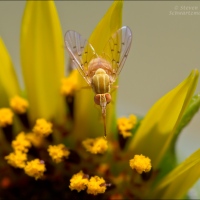
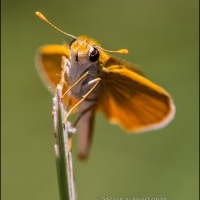
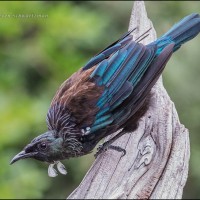
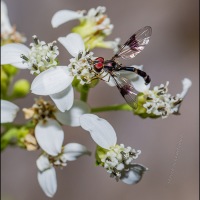
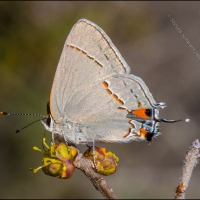
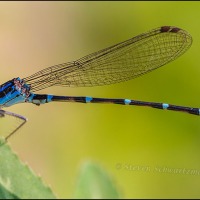

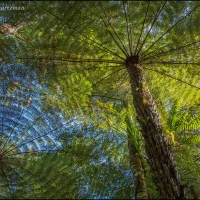

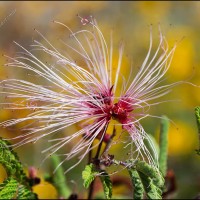
A great image that stands out with its clarity and the rich colours in the background, Steve! If you had not mentioned that the Mexican hat is a developing flower head, I would have thought that it was a mature flower, which had lost all its petals.
Peter Klopp
June 1, 2020 at 8:07 AM
Right. Someone who’s not familiar with this species could take this Mexican hat as mature and on its way out already. I’m glad I included the word “developing” in the text. Here’s one that’s a little further along:
https://portraitsofwildflowers.wordpress.com/2014/06/23/mexican-hat-at-the-shopping-mall/
Steve Schwartzman
June 1, 2020 at 8:46 AM
Thanks for the explanation, Steve!
Peter Klopp
June 2, 2020 at 10:58 PM
Sure thing.
Steve Schwartzman
June 3, 2020 at 4:39 AM
I like the way the pattern of the flower head is highlighted against that colorful background. I don’t know why I’ve not noticed it before, but the same pattern often is used in fiberglass boat decks; the texture reduces the possibility of slipping. The downside is that getting spilled varnish out of such textured fiberglass is a test of patience.
shoreacres
June 1, 2020 at 8:19 AM
When it comes to the pattern on the central column, you think boats (sorry to hear about the trouble in removing spilled varnish) and I think math. I’ve been meaning to bring a well-formed flower head home so I can undergo my own test of patience by counting the spirals to see if they fit the Fibonacci numbers.
Steve Schwartzman
June 1, 2020 at 8:51 AM
It’s a wonderful image, Steve. I love the details, and how the wonderful yellow and red in the background show it off.
circadianreflections
June 1, 2020 at 10:48 AM
Thanks. I found it to be quite an inviting subject, and I took a bunch of portraits with somewhat different alignments. As you say, the colors in the background really made the picture.
Steve Schwartzman
June 1, 2020 at 2:10 PM
Do birds eat that “pine cone” once it’s mature? It must contain a lot of seeds.
Robert Parker
June 1, 2020 at 12:26 PM
It does contain a lot of seeds. Not knowing the answer to your question, I searched and found this: “Their attractive seedheads further extend the season of interest and will be visited in the fall and winter by birds that feed on the seeds.” The resemblance to a pine cone makes me want to count the spirals of seeds on the column to see if they follow the Fibonacci numbers.
Steve Schwartzman
June 1, 2020 at 2:18 PM
That’s quite a lot of crosshatching to stare at, but it seems do-able. Perhaps you could enlarge & print it on a piece of paper, so you could check them off with a pencil. I’m impressed that a plant would know about a medieval Italian mathematician. Math has always been the bane of my existence.
Robert Parker
June 1, 2020 at 2:23 PM
It’s not as onerous a chore as you think. It’s not the number of seeds that we need to count, only the number of spirals. Try it on the next well-formed pine cone you see. Count the number of spirals going in one direction and then the number of spirals going in the other direction. Those two numbers turn out to be consecutive Fibonacci numbers. In a pine cone, that’d probably be 3 and 5, or maybe 5 and 8 or 8 and 13.
The plants were around long before the medieval Italian mathematician. His original connection to the numbers later named after him arose in connection with hypothetical pairs of rabbits reproducing on a regular schedule.
Steve Schwartzman
June 1, 2020 at 2:35 PM
Ah, that’s more like it, right up my alley, I’ve seen hypothetical pairs of rabbits, usually after having more than two glasses of wine at dinner.
Robert Parker
June 1, 2020 at 4:40 PM
Yes, and then the hypothetical rabbits show off their cheshire-cat smiles. You can see the Fibonacci rabbits in section 1.1 at
http://www.maths.surrey.ac.uk/hosted-sites/R.Knott/Fibonacci/fibnat.html#section1.1
Steve Schwartzman
June 1, 2020 at 5:03 PM
Amazing
kimmynagpal
June 1, 2020 at 1:18 PM
Texas wildflowers put on quite a show.
Steve Schwartzman
June 1, 2020 at 2:19 PM
That really is a remarkable photo. The detail of the flower, in closeup, with the brilliant background is just beautiful. Well-done! The flower looks like it’s practicing a yoga bloom move. 🙂
Tina
June 1, 2020 at 4:03 PM
Thanks for your affirmation. As soon as I looked through the viewfinder I knew I was onto something good, what with all those saturated colors beyond the Mexican hat. I’m happy with some of the abstractions I’ve made this season.
Steve Schwartzman
June 1, 2020 at 4:10 PM
Looks like it’s watching a parade of ants.
Steve Gingold
June 6, 2020 at 3:16 PM
Now that’s a take on the picture that I never would’ve come up with. I did, however, get some fire ant bites from mowing the lawn two days ago.
Steve Schwartzman
June 6, 2020 at 5:44 PM
Ouch. I had that happen similarly but with yellow jackets.
Steve Gingold
June 6, 2020 at 5:52 PM
Then this time we can’t even say it was in the service of nature photography.
Steve Schwartzman
June 6, 2020 at 5:57 PM
Super shot Steve .. love the warm background colours 🙂
Julie@frogpondfarm
June 7, 2020 at 2:26 PM
Those warm colors made the picture for me. I’ll have more in that vein.
Steve Schwartzman
June 7, 2020 at 2:28 PM